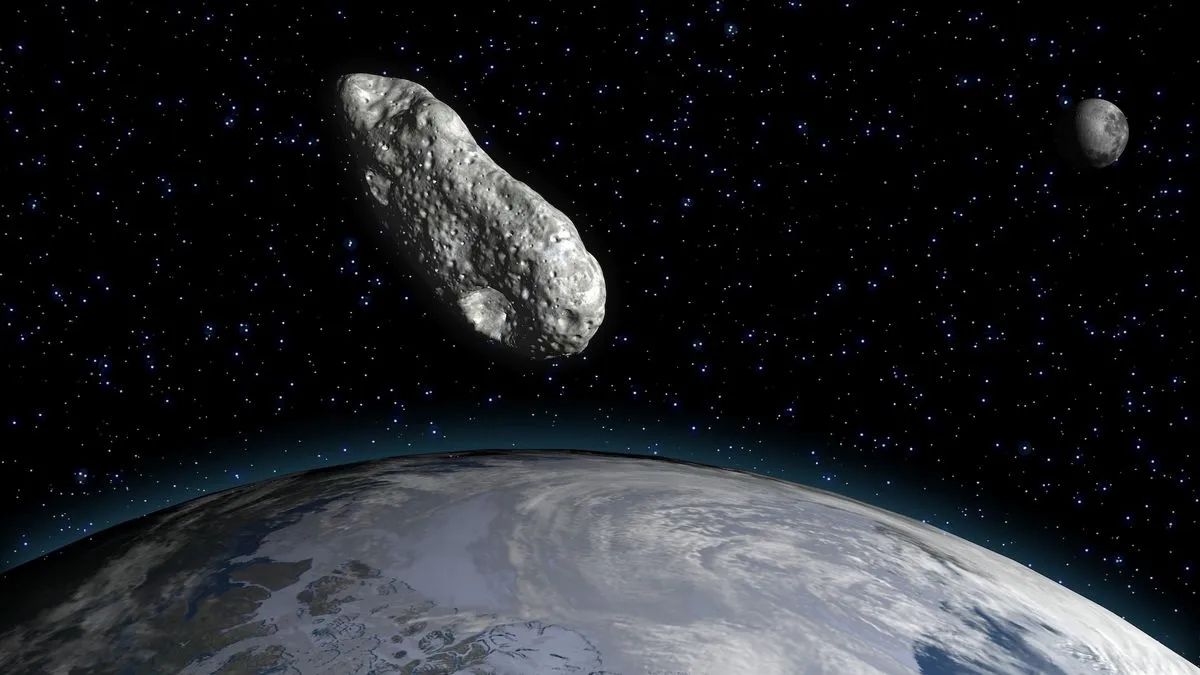
The powerful James Webb Space Telescope (JWST) has successfully completed its first observation of the notorious city-killer asteroid 2024 YR4, which is anticipated to make a dangerously close approach to Earth and the Moon in December 2032. This first observation is part of a two-phase study, with emergency telescope time allocated to an international team of astronomers back in February. The latest findings from JWST suggest that 2024 YR4 may be larger and more composed of rock than earlier estimates from ground-based telescopes indicated.
Fortunately, JWST's observations have confirmed what NASA has been aware of for several weeks: 2024 YR4 is no longer considered a threat to Earth, with a confirmed zero chance of an impact in 2032. However, researchers noted that a potential collision with the Moon remains a possibility. In their preliminary report, which is yet to undergo peer review, the astronomers mentioned that while an Earth impact on December 22, 2032, has been ruled out, there is still a non-zero probability of impacting the Moon during that timeframe.
A second series of observations with JWST is scheduled for May 2025, before 2024 YR4 moves outside of our solar system for several years. This ongoing research is critical as it helps scientists refine their understanding of the asteroid's trajectory and its potential risks.
Astronomers initially discovered 2024 YR4 in December 2024. Early observations using ground-based telescopes indicated that this space rock has a diameter of approximately 180 feet (55 meters)—comparable to the height of the Leaning Tower of Pisa. Its orbital path frequently intersects with Earth's route around the Sun, which raises concerns about a potential collision. If 2024 YR4 were to strike Earth, the impact could unleash destruction equivalent to 500 Hiroshima bombs, capable of obliterating an entire city.
Researchers initially estimated a 3.1% chance of 2024 YR4 colliding with Earth in 2032, marking one of the highest probabilities recorded for an asteroid of this size. However, NASA later refined this prediction down to zero. Amid ongoing uncertainty, the European Space Agency (ESA) allocated several hours of JWST's emergency time for further investigation into the asteroid's size and trajectory.
Key to these observations are JWST's advanced infrared sensors, which can directly detect the heat emitted by the asteroid, offering valuable insights into both its size and composition. In contrast, ground-based telescopes that rely on visible light can only view the sunlight reflected off the asteroid's surface, leaving significant gaps in understanding its true nature. As ESA officials noted, the asteroid's brightness can provide clues about its size, but this relationship heavily depends on the asteroid's reflective surface characteristics.
During its first observations on March 26, JWST monitored the rotation of 2024 YR4 over a five-hour period, revealing that the asteroid measures approximately 200 feet (60 meters) in diameter—slightly larger than earlier estimates. Additionally, the thermal analysis indicated that the asteroid is cooler than typical objects of its size, suggesting a rockier composition than previously thought.
Despite the confirmed lack of an imminent threat to Earth, there remains roughly a 2% chance that 2024 YR4 could collide with the Moon in 2032. Andrew Rivkin, a co-author of the study and an astronomer at Johns Hopkins University, conveyed to New Scientist that while a lunar impact might sound alarming, the Moon regularly endures thousands of smaller meteor strikes annually, with ample evidence of its resilience to significant impacts.
Observing a known asteroid, such as 2024 YR4, create a new crater in real-time would present a unique opportunity for lunar researchers. Alan Fitzsimmons, a professor of physics and math at Queen's University Belfast, expressed hope for a lunar impact, stating it would allow scientists to study the formation of a lunar crater by a known asteroid for the very first time.
The upcoming second round of JWST observations in May will further enhance our understanding of 2024 YR4's orbital trajectory and the prospects of a moon impact, ensuring that researchers remain vigilant about this fascinating celestial body.